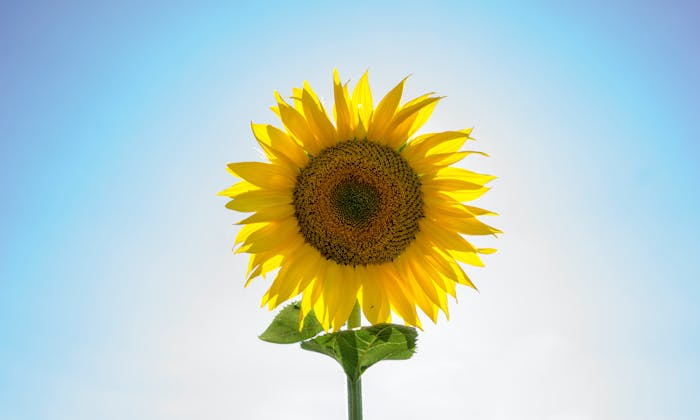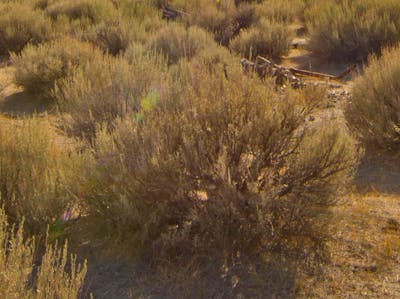Few plants are as American as the Sunflower. There are over 70 varieties of sunflowers, most are from North and Central America, with only three from South America. Before Europeans arrived in the Americas, sunflowers were found nowhere else in the world. Sunflowers were domesticated 3000-5000 years ago by Indigenous people.
The common sunflower, the one you probably think of when you hear “sunflower” is Helianthus annuus. When you buy a bouquet of sunflowers from the store, birdseed, human snack seed, or pressed sunflower oil, you are getting some variety of Helianthus annuus. I love the name Helianthus annuus, since it so clearly means Sunflower and Annual. The common sunflower is an annual, but many other species are perennial.
Many sunflowers exhibit heliotropism -- one reason their name is apt. As the sun moves across the sky, the flower follows it.
Another surprising fact about sunflowers is that the flower is not one flower, but a composite of many hundreds of flowers. The large ball-like center of the flower is a bunch of tiny flowers, each with the ability to form a single, large seed.
The Common Sunflower
The sunflower has been domesticated for thousands of years, and the history of the commercial industry can be traced back as far as the 16th century. So it is no surprise there are many, many cultivars of the common sunflower. Here are a few:
- Black Oil Sunflower - the most common sunflower found used as wild birdseed. It’s also the easiest to find inexpensively in bulk. You can get large containers of it at a feed store, plant nursery or even at a big box hardware store. These are also the cultivars used most commonly for pressed oil production.
- Mammoth Sunflower - mammoth’s are a variety grown for their potential of reaching a tremendous height. They can reach up to 12 feet! To get the most height from these sunflowers, give them ample space (at least a foot from any other plant), and make sure they have good, loamy soil.
- Other ornamental sunflowers: “Lemon Queen”, “Wild”, “Dwarf”, “Twilight”, “Moonshine”. Like tomatoes, the list of cultivars goes on and on, with colors ranging from yellow to deep orange and maroon, and sizes from compact to the 12 foot mammoth.
Other California Native Sunflowers
The good news is, Helianthus annuus is native to California. In fact, it is found natively throughout much of the United States. California also has a number of other species of sunflower:
- Slender Sunflower (Helianthus gracilentus) - Found in Central and Southern California, chaparral and yellow pine forest habitats. Unlike Helianthus annuus, it is a perennial. The outer petals are a little more sparse and slender, hence the common name.
- California Sunflower (Helianthus californicus) - Found in the more Southern parts of Southern California, around San Diego and Imperial County. It likes the heat more than Helianthus gracilentus, and does well in the high desert regions like Anza Borrego. The plants are more gangly than other sunflower plants.
- Serpentine Sunflower (Helianthus bolanderi) and (Helianthus exilis) - found in Northern California and through Oregon, the Serpentine Sunflower gets its name from the soil it prefers. Serpentine soil is formed from the decomposition of certain types of rocks. It tends to be very nutrient poor. It has broader, oval shaped flower petals.
- Showy Sunflower (Helianthus niveus) - found in Southern California deserts, out as far east as West Texas and as far south as Mexico. In California you can find it growing naturally in the sands of Palm Springs, Salton Sea, Anza Borrego and North Algones Dunes Wilderness area.
- Nuttall's Sunflower (Helianthus nuttallii) - sparsely found in California, mostly around Los Angeles, San Bernardino and Orange County. It is widely distributed throughout the US and Canada.
- Cusick's Sunflower (Helianthus cusickii) - found in the North-East mountains fo California.
- Bush Sunflower (Encelia californica) - Not in the same genus as sunflowers, but in the same tribe of the same family (Asteraceae Heliantheae). Common names are “California Bush Sunflower”, “Coast Sunflower” or “California brittlebush”. These favor the coastal areas, as far north as San Louis Obispo, found throughout much of Los Angeles County and extending their range slightly past the southern border into Mexico. Forms 3 foot tall daisies, a perennial that is summer deciduous.
Jerusalem Artichokes (Helianthus tuberosus)
The Jerusalem Artichoke also known as sunroot, sunchoke, wild sunflower, topinambur, or earth apple, is an edible sunflower. It was a food staple for many Indigenous people and has recently been gaining popularity as a commercialized vegetable. It is eaten for its tubers, much like a potato.
The tubers can be eaten raw, cooked, pied, or pickled. Originally it was found in central North America but has spread throughout. Jerusalem Artichokes have no relationship to Jerusalem and are only related to Artichokes because they are both in the Asteraceae family. The tubers of Jerusalem Artichokes are often described as tasting similar to artichokes.
Conclusion
Sunflowers are a great flower to grow to support local wildlife, or even simply for your own pleasure. They are ornamental, often dramatic plants. I like to buy big tubs of the seeds sold as birdseed. They don’t cost very much and can double as wild bird seed (or chicken feed), and can be used to add interest and color to random parts of the garden.


